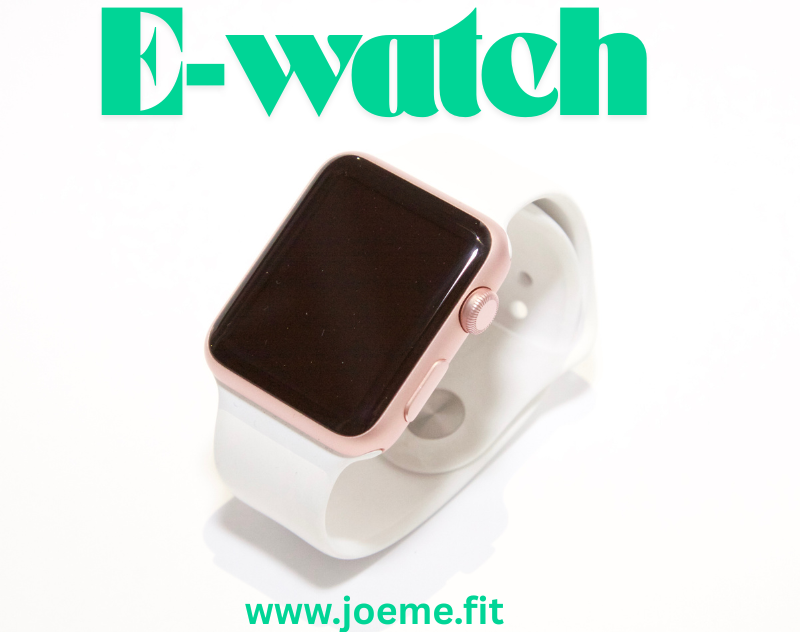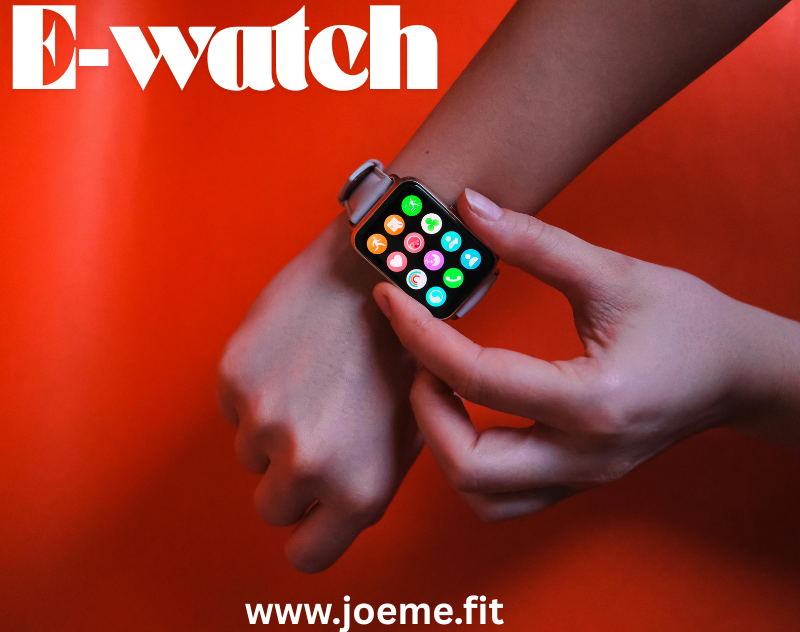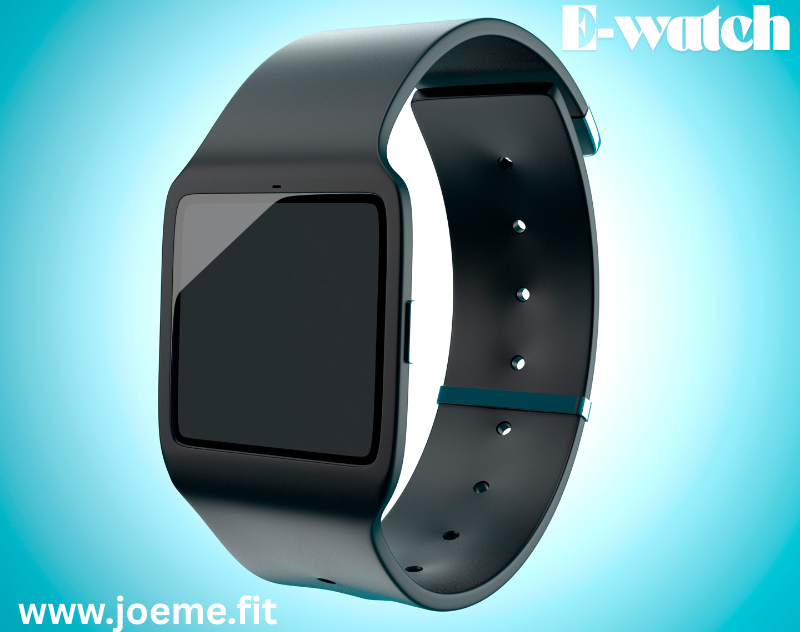Health and fitness have become more data-driven than ever, and e-watch are at the center of that shift. These smart devices are no longer just digital timepieces—they’re powerful health companions worn on your wrist. From step tracking to heart rate monitoring, sleep analysis to stress management, e-watch help turn everyday actions into measurable health improvements. What used to require a doctor’s visit or expensive equipment is now accessible 24/7 through a single device.
More importantly, e-watches don’t just collect data—they help you act on it. Whether it’s a gentle nudge to move after an hour of sitting, a detailed workout summary, or a sleep report that highlights why you feel groggy, these insights help users stay accountable, make smarter choices, and build better habits over time.
You don’t have to be a tech expert or fitness fanatic to benefit from these features. With a little consistency and the right understanding, anyone can turn their e watch into a personal health coach.
In this guide, we will explain how each core fitness feature in modern e-watch works and how it supports your journey to better health.
E-Watch Fitness Features That Help You Stay Healthy

E-watch, also known as smartwatches or fitness trackers, have become essential tools for anyone aiming to stay fit and monitor their health. These compact devices do much more than display the time—they collect, process, and present valuable health data right on your wrist. From tracking your daily steps to monitoring heart rate, sleep, and stress levels, e watch help you understand your body’s needs and adjust your habits in real-time. This guide breaks down the core fitness features in modern e-watch and explains how each one contributes to better health. Whether you’re new to fitness or an experienced athlete, understanding these tools can help you get more out of your daily routines. Visit here!
1. Step Tracking
One of the most basic but useful features of an e-watch is step tracking. Most e watch have built-in accelerometers that count your steps throughout the day. By setting a step goal—often 5,000 to 10,000 steps per day—you can stay motivated to move more regularly. Step tracking helps reduce sedentary behavior, encourage walking breaks during work, and support weight management by increasing daily calorie burn.
Step Tracking Benefits:
- Promotes consistent movement
- Helps track progress toward daily goals
- Supports weight loss through increased activity
How It Works:
- Sensors detect arm movement patterns associated with walking
- Steps are totaled and displayed on the watch face or synced app
Tips:
- Enable hourly reminders to move
- Set achievable daily step goals and gradually increase them
- Sync with health apps to monitor weekly trends
2. Heart Rate Monitoring
Heart rate monitoring helps you understand how hard your heart is working during rest and activity. Modern e watch use optical sensors that measure blood flow under the skin. This feature is useful not just for workouts, but also for understanding your resting heart rate (RHR), which can be a strong indicator of cardiovascular fitness.
Heart Rate Monitoring Benefits:
- Tracks exercise intensity
- Helps identify stress or overtraining
- Monitors general heart health
How It Works:
- Optical sensors shine light onto the skin and measure light reflected by blood
- BPM (beats per minute) is displayed in real time
Tips:
- Wear the watch snugly for accurate readings
- Use heart rate zones to optimize workout intensity
- Monitor resting heart rate trends over time
Heart Rate Zone Table:
| Zone | % of Max HR | Purpose |
|---|---|---|
| Zone 1 | 50–60% | Warm-up, recovery |
| Zone 2 | 60–70% | Fat burning, endurance |
| Zone 3 | 70–80% | Aerobic, stamina |
| Zone 4 | 80–90% | Anaerobic, high-intensity |
| Zone 5 | 90–100% | Maximum effort |
3. Sleep Tracking
Sleep is critical to overall health, and e-watch make it easier to monitor your sleep habits. Most devices automatically detect when you fall asleep and wake up, then break your sleep down into stages: light, deep, and REM sleep. Some watches also monitor movement and breathing during sleep.
Sleep Tracking Benefits:
- Identifies sleep patterns
- Encourages better bedtime routines
- Tracks sleep duration and quality
How It Works:
- Sensors detect movement, heart rate, and sometimes oxygen levels
- Data is used to estimate when you fall asleep and what stages you’re in
Tips:
- Wear the watch overnight
- Avoid caffeine and screens before bed for better results
- Review sleep trends weekly to adjust habits
Sleep Stage Table:
| Stage | Duration (avg.) | Function |
| Light | 50-60% | Transition, light rest |
| Deep | 10-20% | Physical recovery |
| REM | 20-25% | Mental recovery, dreaming |
4. Calorie Burn Estimation
Tracking calorie burn helps manage weight and understand energy balance. E-watch estimate calories burned based on your heart rate, age, weight, gender, and activity level. While not 100% accurate, this feature is useful for tracking trends over time.
Calorie Burn Tracking Benefits:
- Encourages awareness of energy use
- Supports fitness and weight loss goals
- Helps balance food intake and exercise
How It Works:
- Combines heart rate, activity type, and duration
- Estimates both active and resting calorie burn
Tips:
- Use in combination with food tracking apps
- Focus on trends, not single-day accuracy
- Track workouts separately for more detail
5. Workout Detection and Tracking
E-watches can detect and log various workouts automatically or manually. From walking and running to cycling, swimming, and strength training, this feature provides detailed metrics such as time, distance, pace, and calories burned.
Workout Tracking Benefits:
- Automatically logs activities
- Tracks improvement over time
- Motivates through progress visualization
How It Works:
- Detects changes in motion and heart rate
- Classifies and logs activity type and duration
Tips:
- Manually start workouts for more precise tracking
- Customize exercise types in your app
- Review post-workout stats to set goals
Common Tracked Workouts Table:
| Workout Type | Metrics Tracked |
| Walking | Steps, distance, time |
| Running | Pace, heart rate, calories |
| Cycling | Speed, elevation, distance |
| Swimming | Laps, strokes, heart rate |
| Strength | Sets, reps, rest time |

6. Stress and Relaxation Tracking
Stress affects your health more than you may realize. Some e-watch can detect stress levels using heart rate variability (HRV). When stress is detected, you may receive prompts to breathe or relax.
Stress Tracking Benefits:
- Raises awareness of mental health
- Offers breathing exercises to manage stress
- Encourages better recovery practices
How It Works:
- Measures HRV, sleep, and activity levels
- Scores your stress daily or hourly
Tips:
- Use breathing exercises when prompted
- Track trends during busy weeks
- Combine with sleep tracking for full recovery view
Relaxation Features List:
- Guided breathing sessions
- Daily stress scores
- Mindfulness reminders
7. SpO2 Monitoring (Blood Oxygen Levels)
Blood oxygen tracking shows how well your body delivers oxygen to tissues. This is especially useful for athletes, people at high altitudes, or those with respiratory conditions. Some watches measure SpO2 during sleep or manually.
SpO2 Benefits:
- Tracks overnight oxygen saturation
- Identifies breathing issues
- Helps with altitude acclimation
How It Works:
- Uses red and infrared light sensors
- Displays oxygen percentage (normal is 95–100%)
Tips:
- Wear the watch securely
- Measure when relaxed and still
- Use consistently for best insights
8. Guided Coaching and Fitness Plans
Many e-watch offer access to structured workout plans and real-time coaching. These can include goal-based programs (e.g., run a 5K), video workouts, or audio instructions.
Coaching Features:
- Personalized plans based on fitness level
- In-workout audio or vibration cues
- Goal tracking and plan adjustments
Benefits:
- Supports workout consistency
- Helps users stick to long-term goals
- Reduces guesswork in training
Tips:
- Choose a realistic plan for your level
- Set notifications to stay on schedule
- Use post-workout summaries to adjust effort
9. Fitness Reminders and Habit Nudges
One subtle but powerful feature is reminders and nudges—small notifications that encourage movement, hydration, or rest. These push you to stay consistent without needing extra effort.
Types of Nudges:
- “Time to stand”
- “You’re halfway to your goal!”
- “Take a deep breath”
- “Drink water”
Benefits:
- Promotes daily habits
- Keeps you engaged with goals
- Supports long-term behavior change
Tips:
- Enable reminders in the app
- Respond to them when possible
- Adjust frequency based on your schedule
Q&A: Common Questions About E Watch Fitness Tracking
Q1: Are e watch fitness features accurate?
Most features are accurate enough for trends and habit-building. While they don’t replace medical tools, they offer reliable daily insights.
Q2: Can I lose weight using only my e watch?
The e-watch is a tool, not a solution. Combined with movement and mindful eating, it can support and accelerate weight loss.
Q3: How long does the battery last when using fitness features?
Battery life varies by brand. Expect 1–7 days depending on features like GPS, heart rate monitoring, and screen brightness.
Q4: Which E watch is best for beginners?
Look for watches with simple UI, reliable step and heart rate tracking, and compatibility with your phone. Fitbit, Garmin, and Apple Watch all offer beginner-friendly models.
Q5: Do I need a subscription to access all features?
Some platforms offer free tracking but charge for advanced metrics and coaching. Check your device’s plan before committing.

Conclusion
E-watch have redefined how we interact with our health. They go beyond tracking steps or counting calories—they help us stay mindful of our choices, identify patterns, and take action in real time. By monitoring your heart rate, sleep quality, workout intensity, stress levels, and more, these smart devices give you the insights you need to build a healthier, more consistent lifestyle.
But the real power of an e-watch lies not in the features alone, but in how you use them. Small nudges—like standing up after sitting too long, getting in a few extra steps, or doing a guided breathing exercise—can lead to lasting change when done consistently. It’s not about perfection. It’s about progress, and your e- atch helps keep you moving in the right direction.
Whether you’re starting a fitness journey or fine-tuning your daily routine, the data and tools built into your e-watch can act as your daily accountability partner. Use it wisely, track your progress, and adjust as you go.
With the right mindset and regular use, your e watch becomes more than just a device—it becomes a key to a healthier, more active life.